9 Best Materials for Logo and Design Embroidery on Custom Socks
| Apr, 30 , 24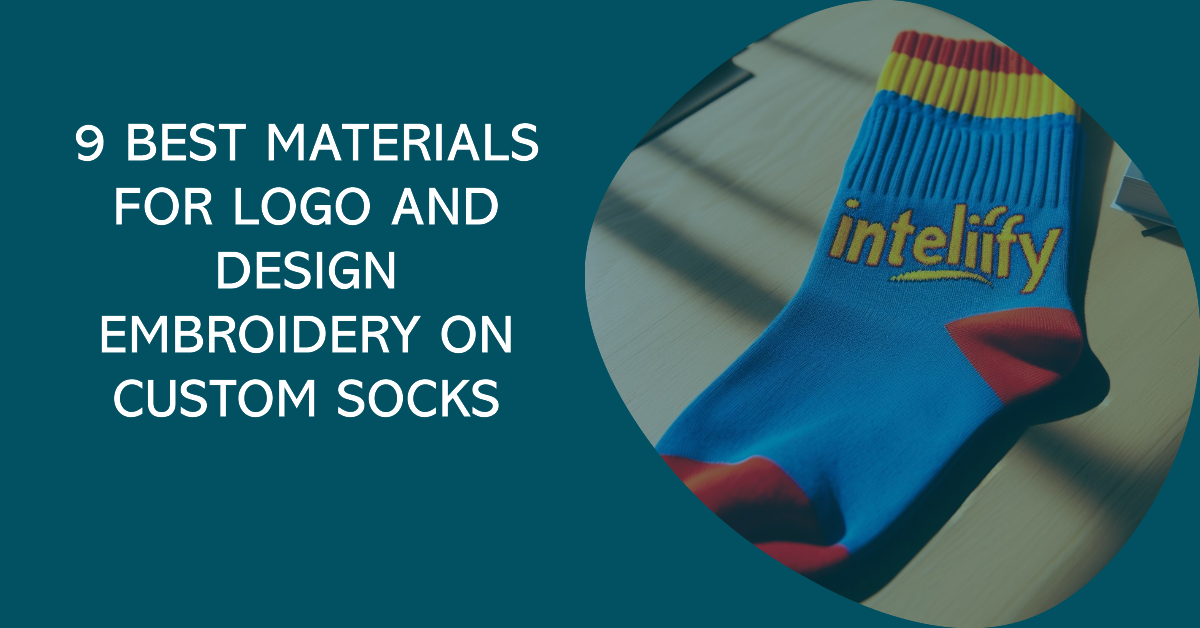
In custom merchandise, the options for showcasing your brand are seemingly endless. While printed designs have long been the norm, there's a captivating allure to stepping beyond the ordinary. Enter embroidery – a timeless technique that adds sophistication and luxury to custom apparel. And when it comes to making a statement, few choices rival the elegance and impact of embroidered custom socks.
Gone are the days when branding had only the choice to mere prints on fabric. Embroidery offers a unique opportunity to elevate your brand's identity, transforming ordinary socks into distinctive pieces of wearable art. It's a subtle yet powerful way to convey quality, attention to detail, and a sense of exclusivity.
Embroidered custom socks exude a luxurious feel that resonates with discerning customers. Whether you're aiming to impress clients, reward employees, or enhance your merchandise lineup, these meticulously crafted accessories leave a lasting impression. From corporate events to promotional giveaways, embroidered custom socks are a versatile canvas for showcasing your logo, slogan, or intricate designs with finesse.
Join us as we go into the world of embroidered custom socks, exploring the endless possibilities they offer for elevating your brand. Discover how this timeless technique can set your business apart, leaving a stylish mark wherever you go.
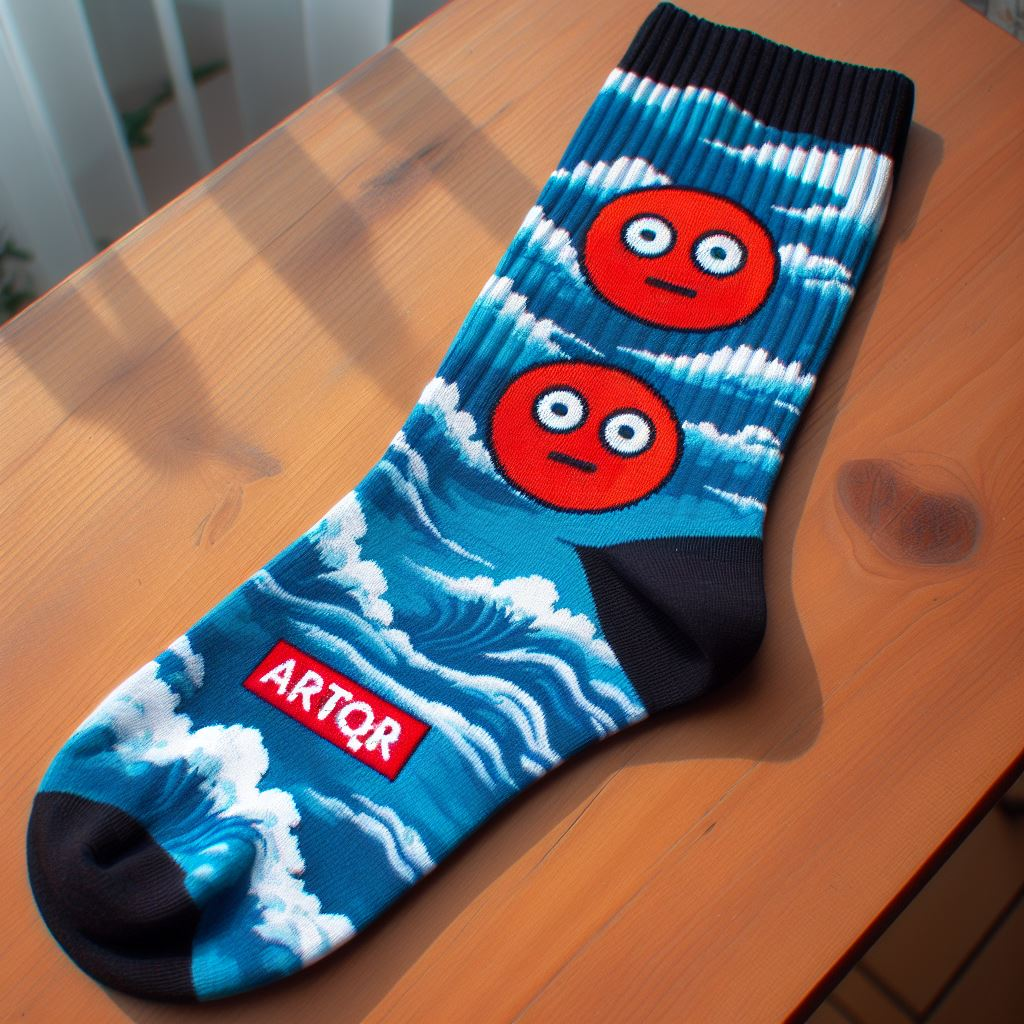
Embroidery vs. Print: A Comparative Analysis for Custom Socks Branding
Embroidering logos or designs on custom socks take branding to the next level by adding a touch of sophistication, durability, and texture. Here's how embroidery compares to print techniques:
|
Aspect |
Embroidery |
Print Techniques |
|
Visual Appeal |
Provides a 3D texture and premium appearance |
Offers a flat, two-dimensional look |
|
Durability |
Long-lasting; less prone to fading or peeling |
May fade or crack over time with repeated washing |
|
Texture |
Adds depth and dimension to the design |
Results in a smooth surface without texture |
|
Luxurious Feel |
Enhances perceived quality and exclusivity |
Can feel less tactile compared to embroidered designs |
|
Versatility |
Suitable for intricate designs and small details |
Limited in replicating fine details |
|
Brand Perception |
Conveys a sense of craftsmanship and attention to detail |
Often associated with mass production and lower-quality |
|
Customization Options |
Offers a wide range of thread colors and styles |
Limited to available ink colors and printing methods |
|
Professional Appearance |
Elevates the overall look of the socks |
May appear less refined or professional |
Embroidery on custom socks elevates branding by offering a premium look, feel, durability, and versatility that surpass traditional print techniques. Whether for corporate gifting, promotional events, or enhancing merchandise, embroidered designs leave a lasting impression and set your brand apart.
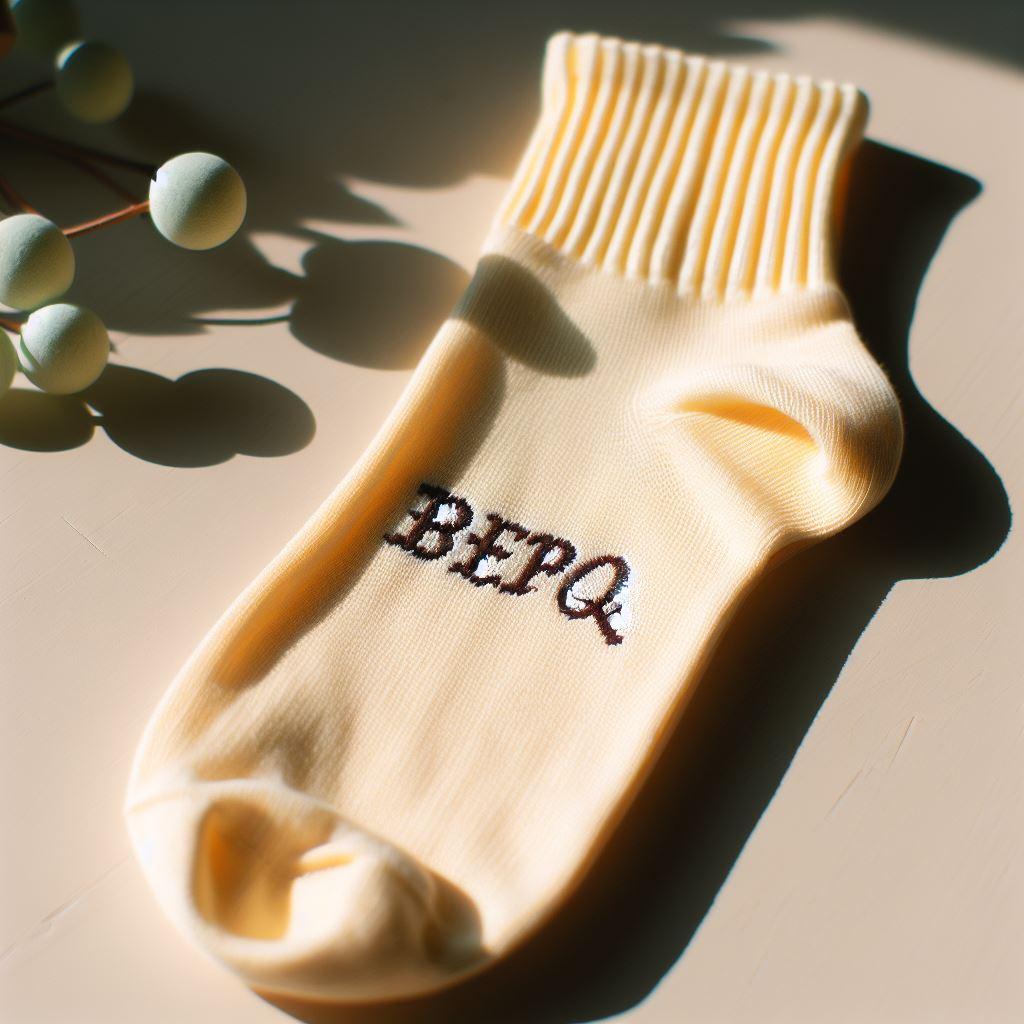
Many people confuse embroidering logos and designs on custom socks with knitting. Let clear the air.
Knitting designs on custom socks and embroidering designs on custom socks are two distinct processes, each with its characteristics and outcomes.
- Knitting Designs on Custom Socks:
- Knitting designs involve creating patterns or motifs directly into the fabric of the sock during the manufacturing process.
- Knitting allows for intricate designs to be seamlessly integrated into the structure of the sock, resulting in a cohesive and durable finish.
- The design is created by manipulating the arrangement of stitches and yarn colors, offering flexibility in creating complex patterns.
- Knitted designs are typically part of the fabric and do not add additional layers or textures to the sock's surface.
- Knitting designs are suitable for producing multicolored patterns, stripes, logos, or text with varying levels of intricacy.
- Embroidering Designs on Custom Socks:
- Embroidering designs involve stitching thread onto the surface of the sock fabric after manufacturing the socks.
- Embroidery allows detailed designs to be added to the socks, creating a textured and three-dimensional effect.
- The design is stitched onto the surface using specialized embroidery machines, offering versatility in creating intricate patterns and designs.
- Embroidered designs can include logos, text, images, or intricate patterns, providing a premium and customized appearance.
- Embroidery adds a layer to the surface. It can affect the overall thickness and texture.
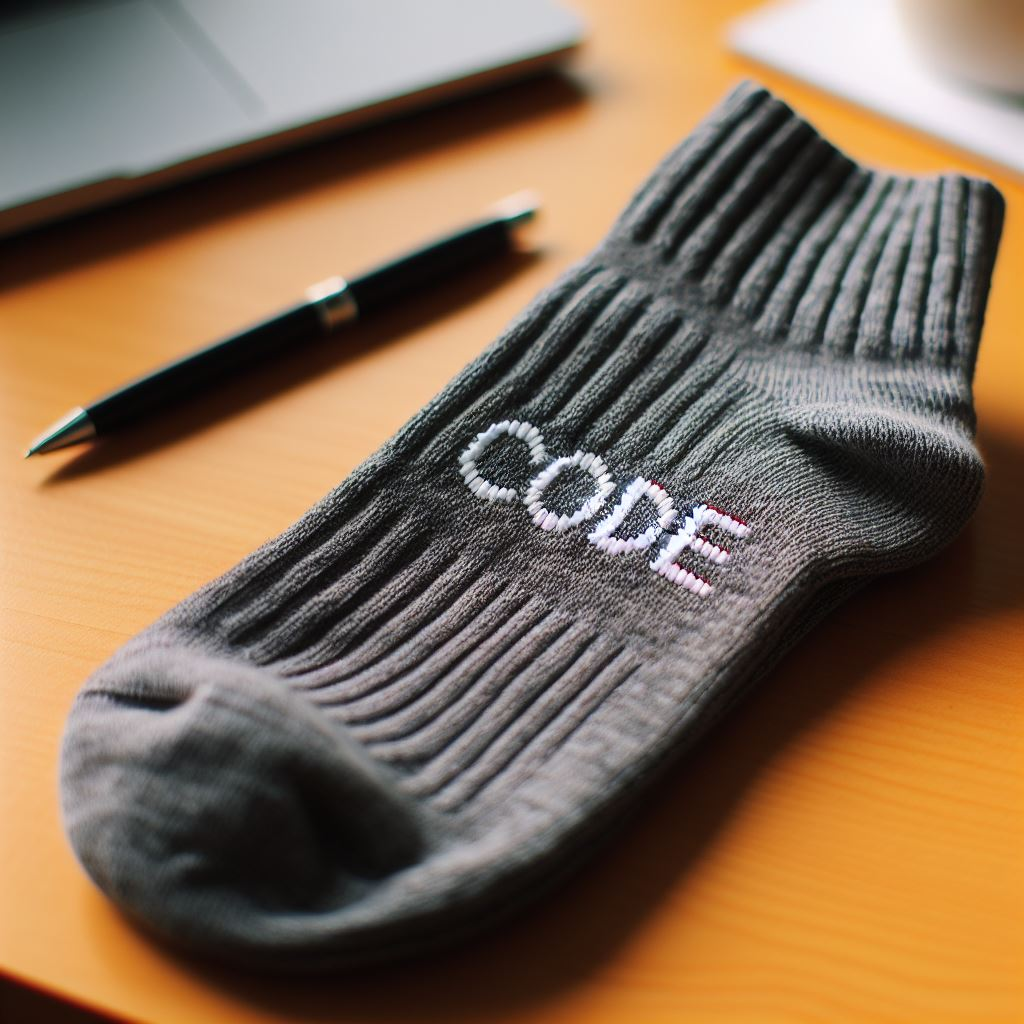
Best Materials for Logo and Design Embroidery on Custom Socks
Selecting the materials is crucial for achieving quality and durability.
- Cotton is famous for custom socks due to its softness and breathability. It provides a smooth surface for embroidery and allows for vibrant colors.
Pros:
- It is soft and breathable. It is comfortable for everyday wear.
- A smooth surface allows for precise embroidery, showcasing vibrant colors.
Cons:
- It may shrink or lose shape after multiple washes.
- Less durable compared to synthetic materials. It may wear out over time.
- Polyester is known for its strength and resistance to wrinkles and shrinking, making it a durable option for embroidered custom socks. It also holds embroidery well and retains color vibrancy.
Pros:
- Highly durable and resistant to wrinkles, shrinking, and fading.
- Holds embroidery well, maintaining color vibrancy over time.
Cons:
- It can feel less soft compared to natural fibers like cotton or wool.
- It may not offer as much breathability, leading to potential moisture buildup.
- Nylon is a lightweight and durable material often blended with other fibers to enhance strength and elasticity. It provides a smooth surface for embroidery and adds durability to custom socks.
Pros:
- Lightweight and durable, it is ideal for active wear.
- Smooth surface for embroidery, ensuring precise designs.
Cons:
- Can lack breathability, leading to potential discomfort in hot conditions.
- It may not provide as much warmth as other materials.
- Woollen custom socks offer warmth and moisture-wicking properties, making them suitable for embroidery in colder climates. Wool provides a textured surface that can add dimension to embroidered designs.
Pros:
- It offers warmth and moisture-wicking properties, suitable for cold climates.
- Textured surface adds depth to embroidered designs.
Cons:
- It may irritate those with sensitive skin.
- It requires special care during washing to prevent shrinkage and felting.
- Bamboo socks are eco-friendly and known for their softness and moisture-wicking abilities. They provide a smooth surface for embroidery and offer a luxurious feel.
Pros:
- Eco-friendly and soft, providing a luxurious feel.
- Moisture-wicking abilities keep feet dry and comfortable.
Cons:
- It is less common than other materials and may have limited availability.
- It may require special care during washing to maintain durability.
- Acrylic custom socks are lightweight, soft, and resistant to wrinkles and shrinkage. They provide a smooth surface for embroidery and hold stitches well.
Pros:
- Lightweight, soft, and resistant to wrinkles and shrinkage.
- Smooth surface for embroidery, ensuring neat designs.
Cons:
- It may lack the breathability of natural fibers.
- It can be less environmentally friendly compared to natural materials.
- Spandex, also known as elastane, is often blended with other fibers to add stretch and elasticity to custom socks. It helps socks maintain their shape and provides a flexible base for embroidery.
Pros:
- Adds stretch and elasticity to socks, enhancing fit and comfort.
- Provides a flexible base for embroidery, ensuring designs maintain shape.
Cons:
- It may degrade over time with repeated stretching and washing.
- It can cause potential allergies in some individuals.
- Modal is a rayon made from beech tree fibers, known for its softness and breathability. It provides a smooth surface for embroidery and offers a luxurious feel similar to cotton.
Pros:
- Soft and breathable, offering a luxurious feel similar to cotton.
- Smooth surface for embroidery, allowing for precise designs.
Cons:
- It may be less common than other materials, leading to limited availability.
- Requires careful washing to maintain durability and shape.
- Merino Wool: People prize merino wool for its softness, warmth, and moisture-wicking properties. It provides a textured surface for embroidery and is ideal for custom socks worn in cold weather.
Pros:
- Soft, warm, and moisture-wicking, ideal for cold weather.
- Textured surface adds dimension to embroidered designs.
Cons:
- Higher cost compared to other materials.
- Requires special care during washing to prevent shrinking or felting.
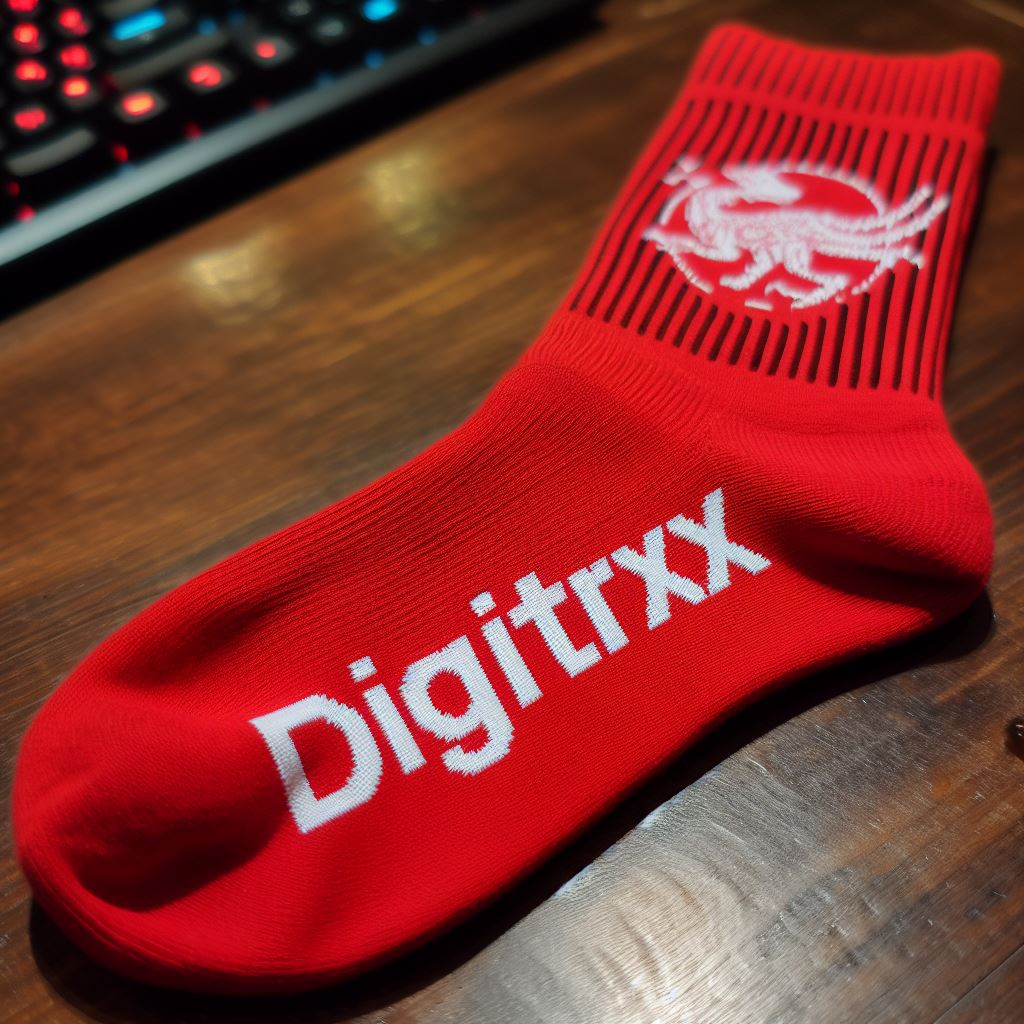
Selecting the Perfect Material for Embroidering Logos and Designs on Custom Socks
Choosing the best material for embroidering designs and logos on custom socks involves considering several factors to ensure the socks align with your brand image, weather conditions, usage, and budget. Here's how to make an informed decision:
- Brand Image: Consider the image you want your brand to convey. Materials like merino wool, bamboo, or modal may be suitable due to their softness and premium qualities if you aim for a luxurious and upscale feel. For a more casual or athletic brand image, options like cotton, polyester, or nylon may be preferable for their durability and performance.
- Weather Conditions: Consider the climate where you will sell or distribute them. In colder weather, wool or merino wool socks provide warmth and insulation, making them ideal for embroidery. For warmer climates, breathable materials like cotton, bamboo, or modal help keep feet cool and dry. Consider the moisture-wicking properties of the material to ensure comfort in varying weather conditions.
- Usage: Determine the usage of your custom socks. If they are for everyday wear, prioritize comfort and durability. Opt for nylon, polyester, or acrylic, offering moisture-wicking properties and durability for sports or active wear. If the socks will be part of corporate or promotional giveaways, choose materials that reflect the desired level of quality and sophistication.
- Budget: Set a budget for your custom sock project and consider the cost implications of each material. Natural fibers like wool, merino, and bamboo are more expensive than synthetic materials like polyester or acrylic. However, they may offer superior comfort and performance. Evaluate the balance between cost and quality to find the best option within your budget constraints.
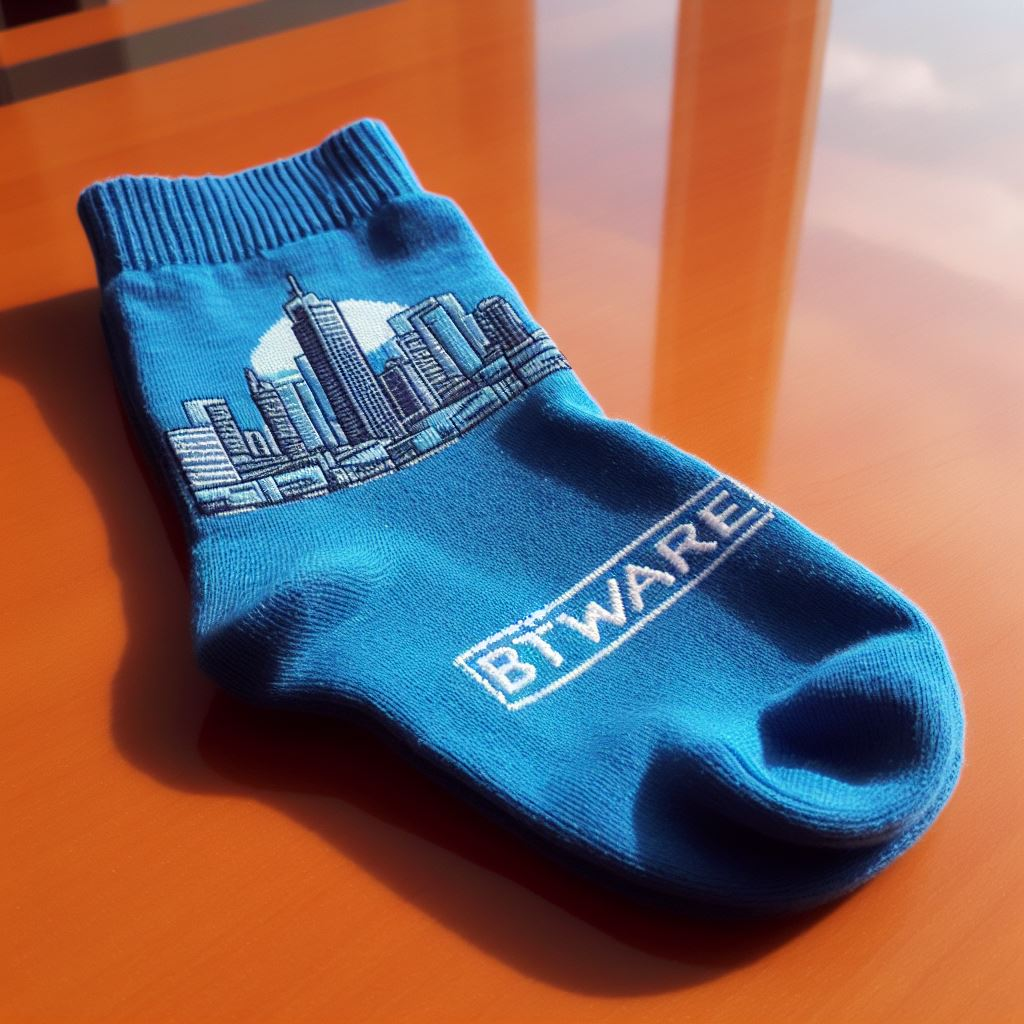
Finding the Right Manufacturer for Embroidering Logos and Designs on Custom Socks
When searching for a manufacturer to embroider logos and designs on custom socks, there are several key differences to consider compared to sourcing regular custom-printed socks.
- Expertise in Embroidery: Look for manufacturers with specialized expertise in embroidery. They should have a proven track record of producing high-quality embroidered products and be familiar with the intricacies of embroidering designs on socks.
- Quality of Stitching: Pay close attention to the quality of stitching. Check the use of advanced embroidery machines and techniques to achieve precise and durable stitching that enhances the overall appearance.
- Material Compatibility: Confirm that the manufacturer can work with many materials suitable for embroidering socks, including cotton, polyester, nylon, wool, bamboo, and blends. They should understand the unique properties of each material and how it affects the embroidery process.
- Customization Options: Evaluate the manufacturer's customization options to ensure they can accommodate your specific design requirements. It includes the ability to embroider intricate logos, patterns, and text in various colors and sizes.
- Sampling Process: Request samples of their embroidered socks to assess the quality of their work firsthand. Look at stitch density, thread tension, and overall finish to ensure it meets your standards.
- Minimum Order Quantities (MOQs): Inquire about the manufacturer's minimum order quantities for embroidered custom socks. Some manufacturers may have higher MOQs for embroidered products due to the additional time and labor involved in the embroidery process.
- Lead Times: Discuss lead times with the manufacturer to ensure they can meet your production schedule. Embroidery may require more time than printing, so factor this into your timeline when placing orders.
- Price Considerations: Compare pricing quotes from multiple manufacturers to ensure competitive rates for embroidered custom socks. Understand that embroidery may be more expensive than printing due to the complexity of the process.
- Customer Reviews and References are the best ways to research the manufacturer's reputation. Look for testimonials that speak to the quality of their embroidery work and their reliability as a supplier.

Take Your Brand to New Heights with EverLighten
If you're ready to elevate your brand with custom-embroidered socks that make a lasting impression, look no further than EverLighten. With our commitment to 100% customization, you can bring your vision to life with precision that reflects your unique style and identity.
At EverLighten, quality is our top priority, and every pair of socks undergoes a rigorous 100% quality check to ensure excellence in craftsmanship. Our team of experienced designers is here to offer free design assistance, helping you create stunning embroidered designs that captivate and inspire.
With worldwide delivery, you can showcase your brand's personality and flair. And with our 24/7 customer support, you can trust that we'll be here to assist you every step, from concept to delivery.
Experience the flexibility and convenience of unlimited revisions, ensuring your custom socks meet your exact specifications. And with low minimum order quantities, you can bring your vision to life without breaking the bank.
Don't settle for the ordinary. Choose EverLighten for custom embroidered socks that stand out from the crowd and leave a lasting impression. Connect with us today to get started on your custom sock journey.
FAQs:
Why is embroidery a popular choice for custom socks?
Embroidery adds a premium and sophisticated touch to custom socks, elevating the look and feel. It provides depth and texture to designs, making them stand out.
Which material is best suited for embroidery on custom socks?
Cotton is a popular choice due to its softness, breathability, and smooth surface for embroidery. However, other materials like polyester, nylon, wool, and bamboo offer unique advantages depending on specific needs and preferences.
Can all materials be embroidered on custom socks?
Most materials commonly used for socks, such as cotton, polyester, nylon, wool, bamboo, acrylic, spandex, modal, and merino wool, can be embroidered. However, the suitability may vary based on fabric texture, thickness, and stretchiness.
Will the embroidery affect the comfort of the socks?
When done correctly, embroidery on custom socks should not significantly affect comfort. However, it's essential to choose high-quality materials and ensure proper embroidery to maintain the overall comfort of the socks.
Are embroidered custom socks more expensive than printed ones?
Embroidered custom socks may be slightly more expensive than printed ones due to the additional labor and materials involved in the embroidery. However, the enhanced quality and premium look often justify the higher cost.
Can I wash embroidered custom socks like regular socks?
Yes, you can wash embroidered custom socks like regular socks. Follow the manufacturer's instructions to ensure the embroidery remains intact and the socks maintain quality over time.

